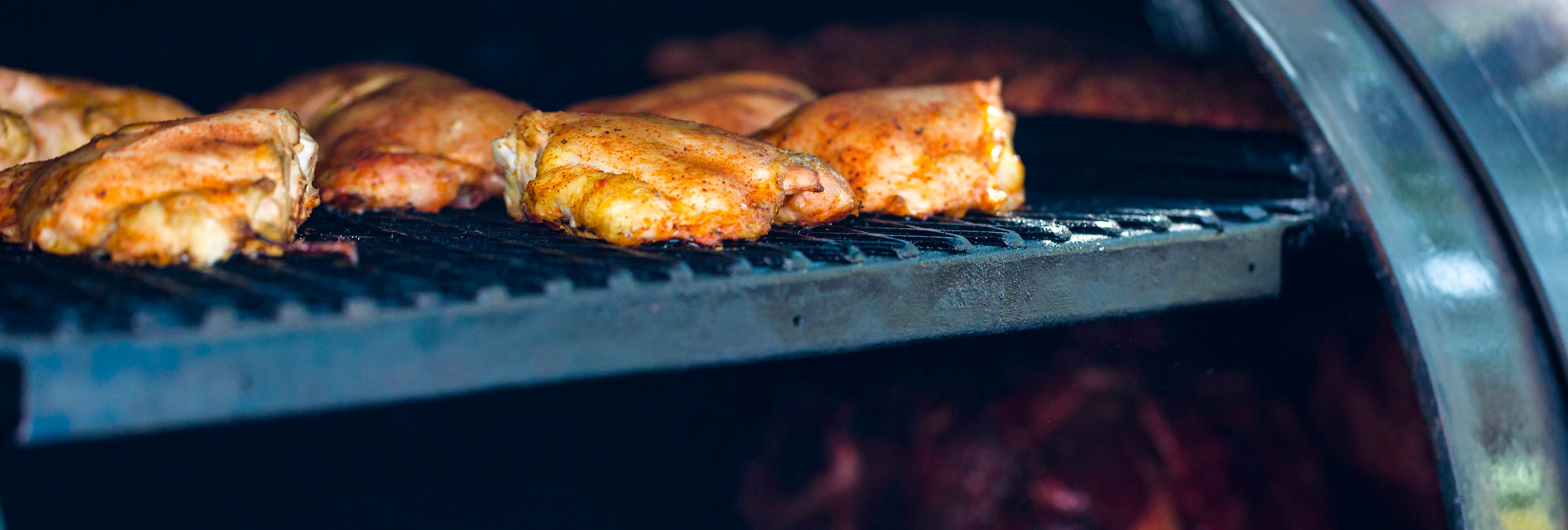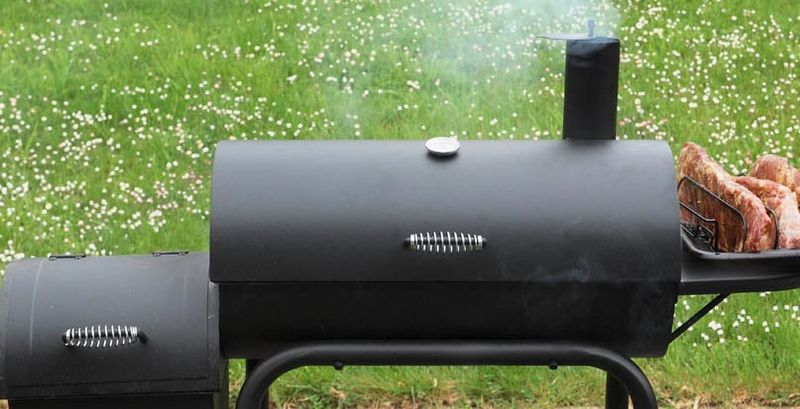Low ’n Slow - Smokers infuse tenderness and flavor


Two hundred years ago is wasn’t uncommon for a prosperous homeowner to own a smoke-house, since smoking, along with curing, was the way meat was stored before refrigeration. Today, however, smoking meat is all about tenderness and flavor.
Not up in your grill
In grilling, you typically cook meat directly over coals or another heat source like gas or an electric coil. Juices from the meat drip onto the heat source, creating smoke as it burns up, or sometimes flames.
The result is that your already-tender meat picks up that delicious “grill flavor” of charcoal, wood, or caramelized meat.
Smoking meat low-and-slow—typically between 225 and 275 degrees for hours and hours—not only changes tough parts to tender and moist deliciousness, it imbues cuts of meat with flavor and the character of the smoke.
Some grills can smoke, too, but unless they are specifically designed also for smoking this isn’t a true single-purpose smoker.

Choices abound
One thing about smokers, you have plenty of choices. According to amazon.com's best sellers (and others) many of the names are quite familiar: Cuisinart, Smoke Hollow, Masterbuilt, Char-Broil, Weber, Z-Grills, Bradley, Coyote, and Traeger are all popular smoker brands, offering different types.
Hardwood log smokers—This is the direct descendant of the smokehouse. You need a supply of dried hardwood and patience to actively manage smoke temperatures and burn for several hours…but you get authentic hardwood smoked flavor and tenderness. Due to (often) large size, these are usually the choice of professional competitive BBQ enthusiasts.
Electric smokers—Plug it in and the smoker does the rest. They eliminate the need to tend fire, watch temperatures, or get your utensils dirty—all you need to do is season your meat and press the start button. The smoker will control temperature in your smoking chamber thermostatically.
Electric smokers come in two flavors, specifically those that heat chips or pellets with a heating element like an electric stove, and those that use electricity to monitor and feed those pellets or briquets to a fire box.
Gas smokers—If you desire something not connected to electricity, look to a gas smoker. In addition to portability—if you wanted to spend a day smoking dinner while camping, for example—you get most of the convenient features of electric smokers.
Charcoal smokers—These bridge the gap between logs and electricity, and are quite popular because some do double duty as smokers and grills. Whether you want a vertical smoker, traditional metal kettle, or a ceramic kamado-type smoker—they tend to hold heat better and more evenly—the choice is up to you and your checkbook.
Tags:Country Kitchen

Acreage Life is part of the Catalyst Communications Network publication family.
















